Estimated Read Time: 7 minutes
The Star Finch
Welcome back to Part 6 of The Finches of Serenity!
This is our informational bird blog about the vibrant, budding finches in our Serenity Aviaries.
Today, we’ll cover the colorful and kindhearted Star Finch!
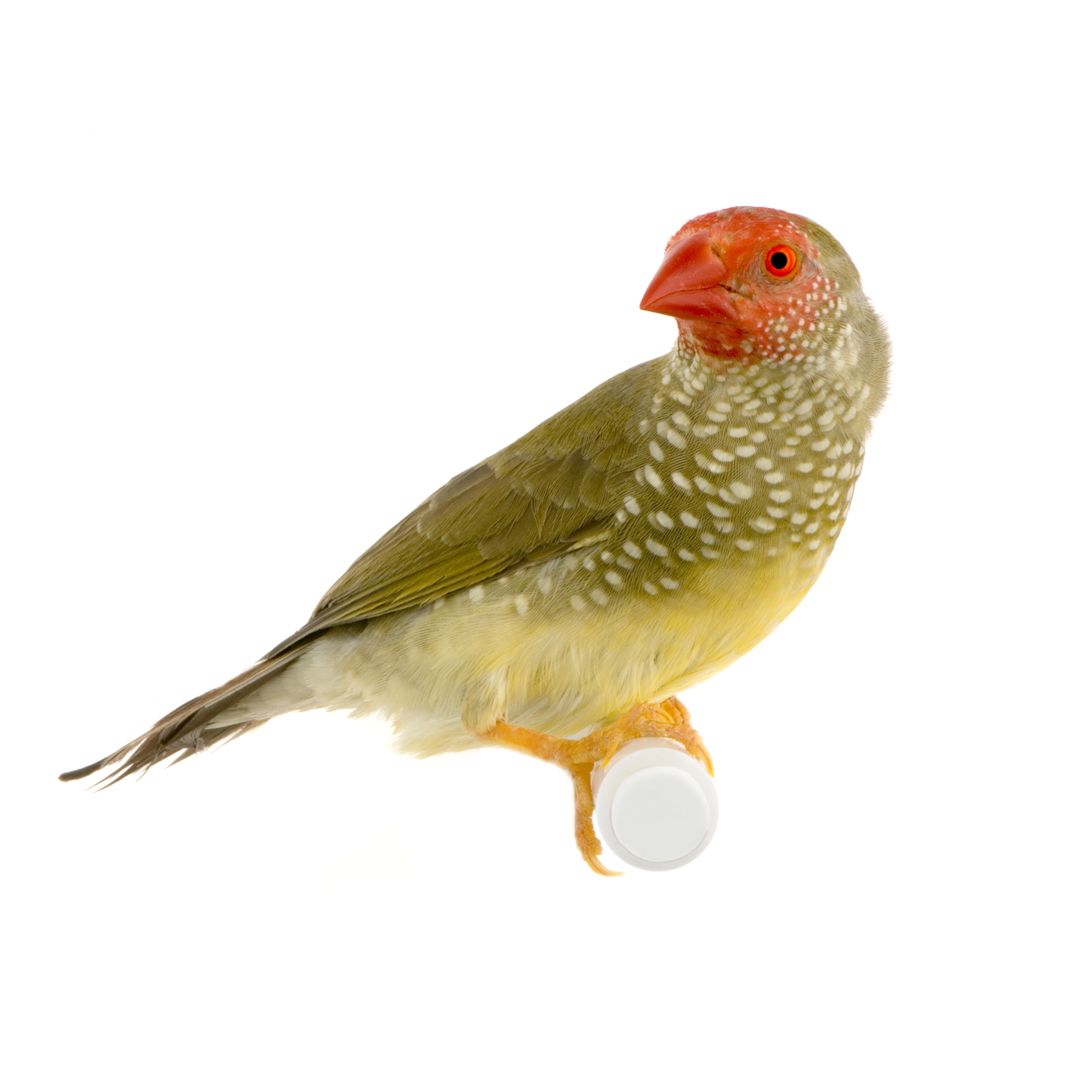
Common Names for a Star Finch
- Red-Tailed Finch
- Red-Faced Finch
- Rufous-Tailed Finch
Star Finch Natural Habitat
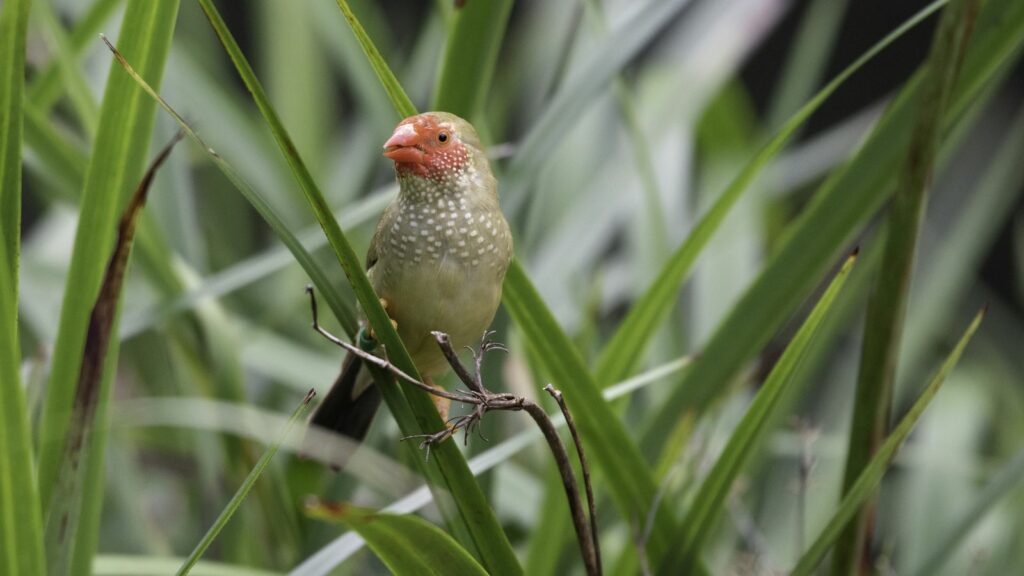
You’ll find star finches in the northern, southern, and western regions of Australia.
Their specific habitats consist mainly of savannas and grasslands with tall vegetation, usually near swamps and creeks.
Physical Characteristics of a Star Finch
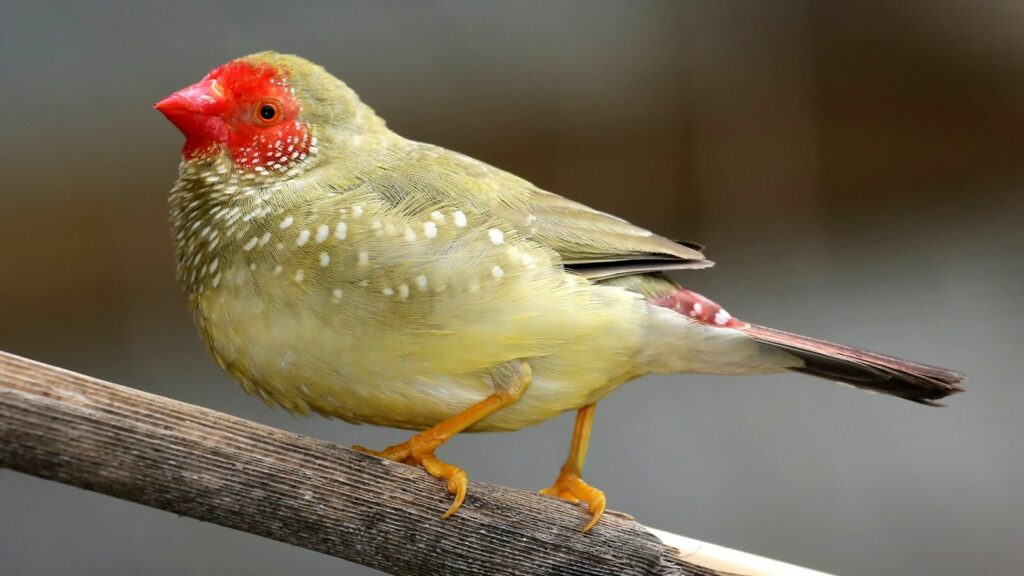
Male star finches grow to around 4 inches long from beak to tail.
The females grow to about the same size, but they’re usually just a little smaller.
And although males and females are similar in size, their colors are quite different.
Male Plumage Colors
Males have a vibrant red face and beak, and dull brown on the top of their head, neck, back, and wings.
They also have white spots on their chest, flanks, and tail.
Finally, their underside is dark to light yellow.
Female Plumage Colors
The females have a yellow-orange colored head and beak.
Their flanks, wings, back, and top of the head are an olive-green color.
White spots span from her neck, down her flanks, and end at the start of her tail.
Her underside is a dull yellow color.
Colors of Sub-species
There are three main sub-species of the star finch that produce different colored feathers than the normal colors listed above.
Yellow Face
Overall color remains the same olive green, but their face is an orangish-yellow, as opposed to bright red.
Pied
These star finches have blotches with no color pigment.
Their overall body color is typically yellow-brown or olive-green.
They also have bright red heads and beaks.
Fawn
These finches have a yellow-brown color throughout, except for the head and beak which are bright red.
This subspecies also has white spots along its belly and flank.
Bird Song of the Star Finch
Male star finches can sing, while females will only make simple calling noises.
Both sexes are quiet compared to many other finches, but they still give off a pleasant tune.
Watch the video below for a better understanding of the different sounds they make.
Behavior and Temperament
Star finches are docile, gentle, and generally accepting of other finches.
In the wild, they travel in flocks of around 20 as they search for food and water.
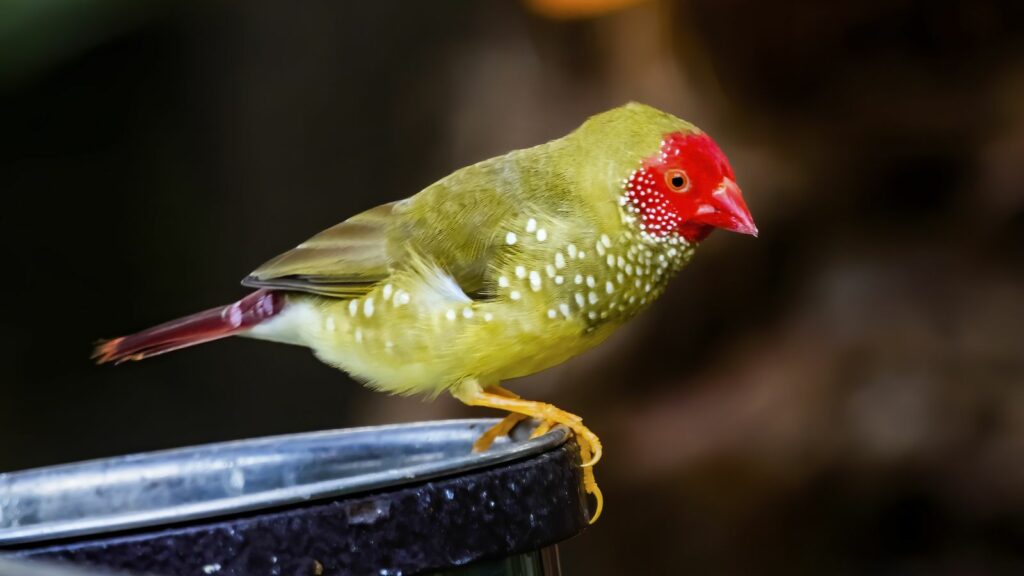
Their passivity makes them excellent additions to mixed aviaries.
To ensure our star finches live peacefully in our enclosures, we mix them with birds of similar temperament.
Like any animal, they become more aggressive during the breeding season.
When housing them, the aviary must be spacious enough so all the finches can enjoy their space, without getting territorial.
Breeding Habits
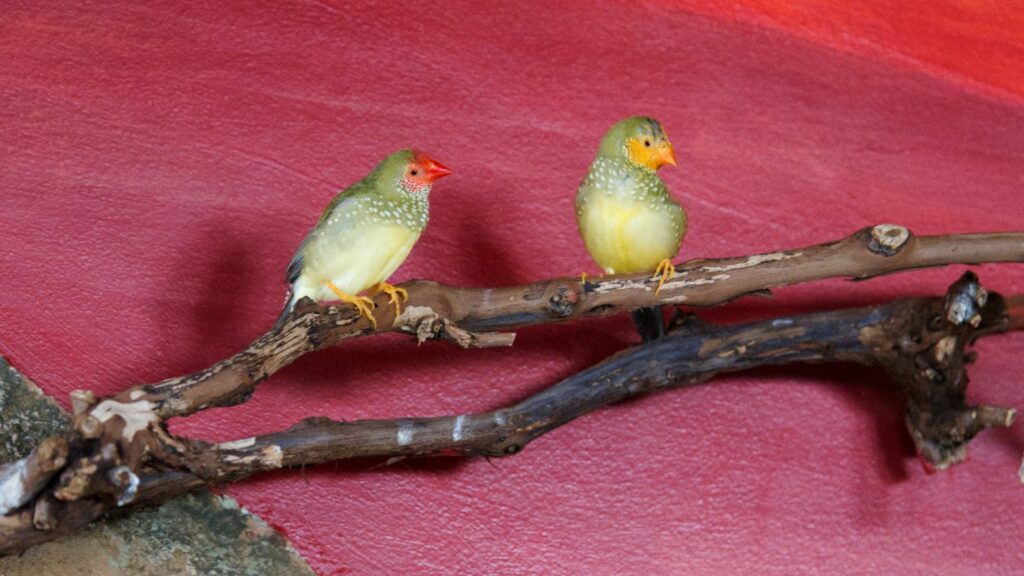
Their breeding season can vary depending on location.
In northern Australia, breeding may start in December.
In western parts of Australia, breeding may start a month or two later.
This season continues through late August and into September.
In captivity, however, star finches can mate throughout the year if environmental requirements are met.
The hen will lay a clutch of around 3 to 6 eggs. Both parents will take time incubating the eggs.
After about two weeks, the eggs should hatch. They will remain in the nest until fledging, which takes about three weeks.
After one to two months, the fledglings will be independent of their parents.
In captivity, we remove the young birds at this time.
If the parents decide to mate again, conflict can arise between them, so we carefully move young star finches to a new aviary.
This allows the parent finches to safely breed once more.
Proper Care for Star Finches
Appropriate Aviary Features
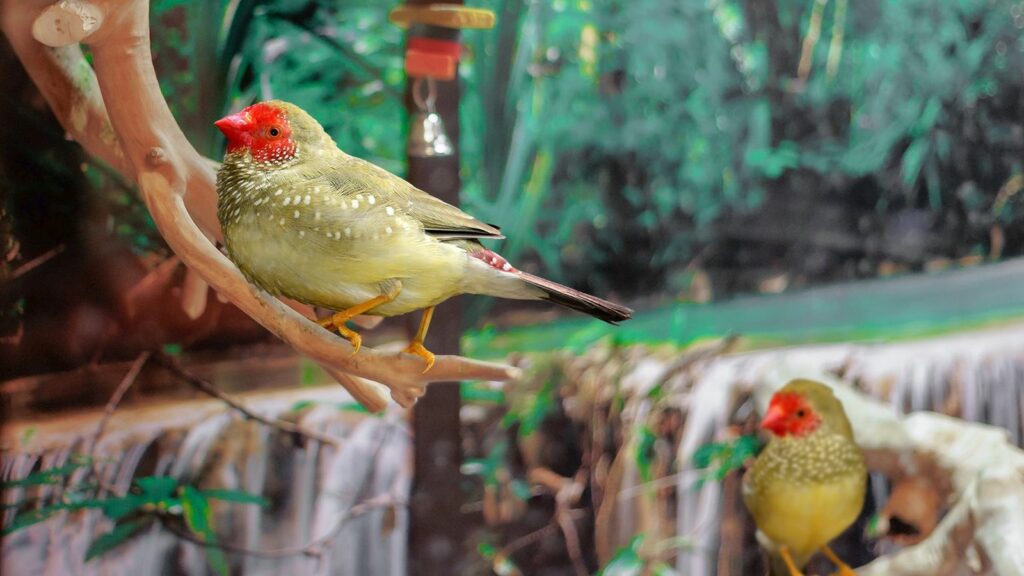
Aviary Size
The first step in creating a comfortable home for Star Finches is to have the correct cage size.
When housing finches, the bigger the enclosure, the better.
More specifically, many believe that for each pair of finches, you should have at least 3-4 square feet of space on the bottom.
Aviary Shape
Star finches enjoy flying back and forth, but they can’t climb, so the length of their enclosure is more important than the height.
Also, avoid using rounded edges, as this removes some of their available space.
Aviary Materials
To avoid chewing and ingesting materials, the structure should be free of softwood, paint, untreated steel, and soft plastics.
By using high-grade materials, our Serenity Aviaries prevent chewing and ingestion.
Our aviaries are made from:
- Solid oak
- Stainless steel wire
- Anodized aluminum
- High-grade laminate panels
- Acrylic or glass windows
Aviary Functionality
For a star finches’ aviary, you’ll need food and water access, ventilation, adequate internal lighting, heating, and other accessories.
Each of our aviaries comes with these features and we’ll perform regular maintenance and food replenishment on each service visit.
We also offer many additional accessories for your finches’ benefit.
Customize Your Own Aviary
Our large enclosures provide the space and functionality for each bird to feel safe, comfortable, and entertained.
But before we build anything, we work with each client to find the right size and color for their interior.
Then, we determine the appropriate number of finches for that custom bird cage.
Below are some of our popular aviary colors.
White and black are our contemporary finishes, and if you’d like a different hardwood color, you can reach out to us today!


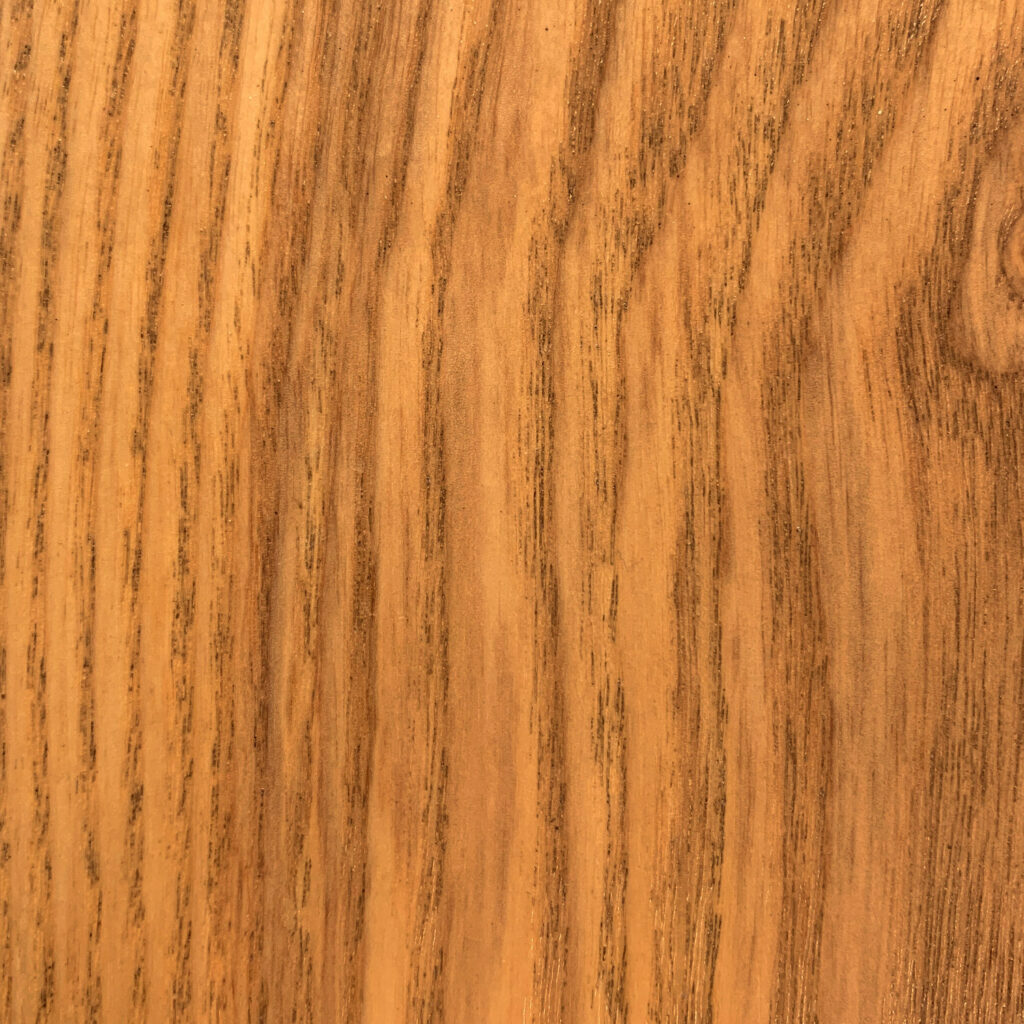
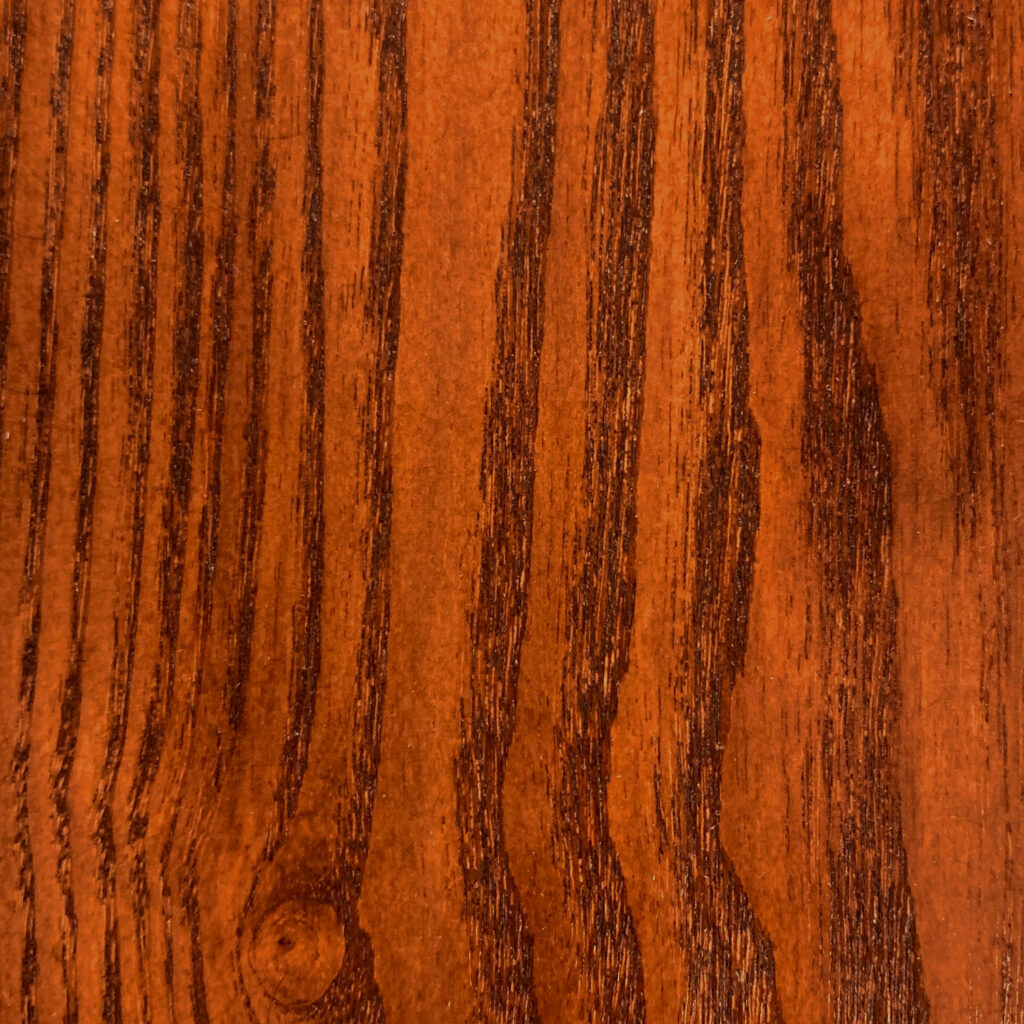
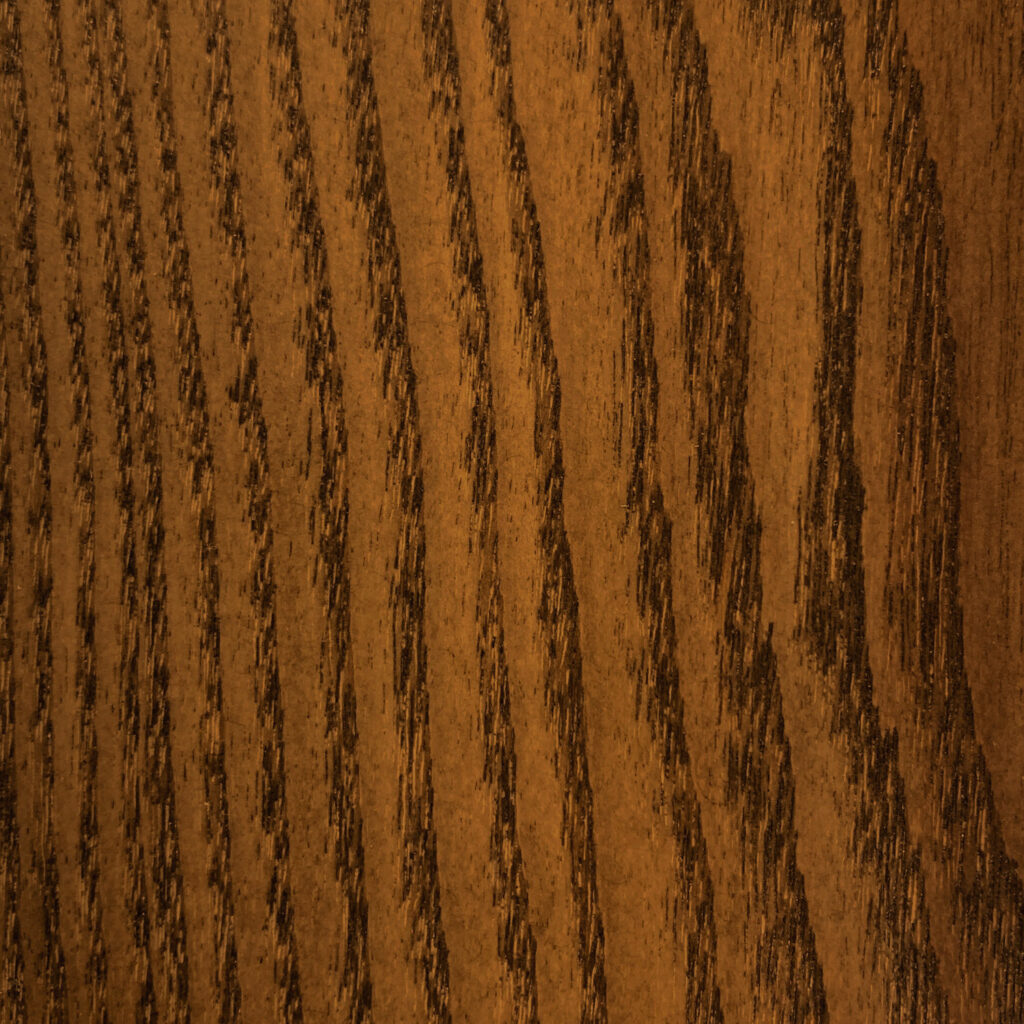
Do you know what our Serenity Aviaries look like?
Keeping with Other Finches
Although Star Finches are very docile, they can’t be paired with all finches.
They need to be paired with other docile and passive birds for a happy home.
When we decide on the type of birds for a certain enclosure, we ensure all the birds will get along well.
For more information on pairing finches, check out this compatibility chart.
Food and Water Sources
Below are the most popular foods for a Star Finch:
- Finch seed mix
- Fresh greens
- Egg Food
- Sprouted Seeds
- Insects and mealworms
- Cuttlebone and grit
If your business gets a Serenity Aviary, we provide a surplus of nutrient-rich bird seed to keep your finches happily fed.
A few water sources should also be provided in an aviary: One for drinking and one for bathing.
Our Infinity Feeder makes this task simple and is the healthiest way to feed and water your finches.
Functional Aviary Decorations
Lastly, you’ll need some interior decor.
Some essential items to include are branches, perches, swings, and nests.
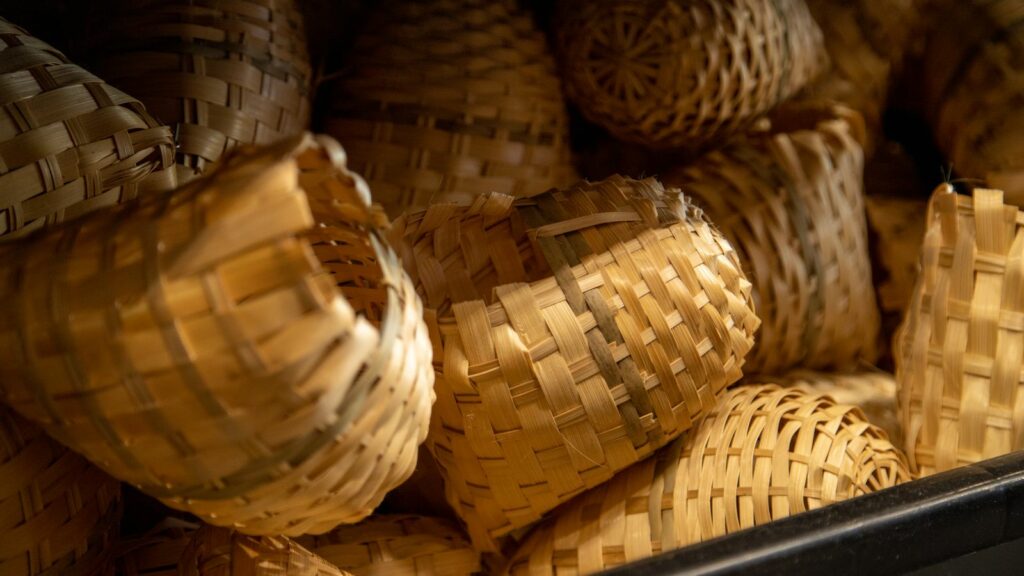
Swings and branches offer:
- Entertainment
- A spot to perch
- A way to establish territory
- Landing on them naturally trims the finches’ claws
It’s important to install these items in various spots towards the top of the aviary because finches prefer to perch as high up as possible.
As for nests, a Star Finch may use them for:
- Resting
- Hiding
- Breeding
Just like perches and swings, make the nests accessible, but position them as close to the top as possible.
Ongoing Aviary Cleaning and Maintenance
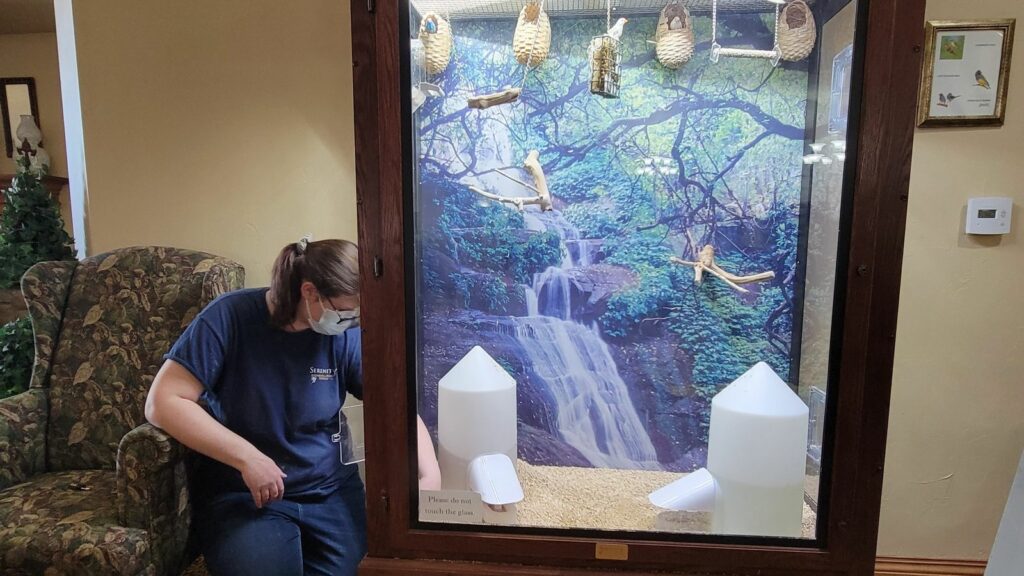
By leasing through Serenity, much of the maintenance will be taken care of for you. Your facility will get:
- An elegant bird enclosure
- A collection of finches
- A full suite of proprietary products
- Routine cleaning services
- All of this for no upfront cost and a low monthly fee!
Without Serenity Services, you have several things to do to keep your Star Finches happy and healthy:
- Sanitize and replenish food and water sources.
- Remove and replace bedding.
- Clean droppings tray.
- Wipe down all surfaces.
- Scrub all cracks and crevices.
- Sanitize and rotate accessories.
- Thoroughly rinse and dry the enclosure.
Do you want the wonders of an aviary without the extra work?
